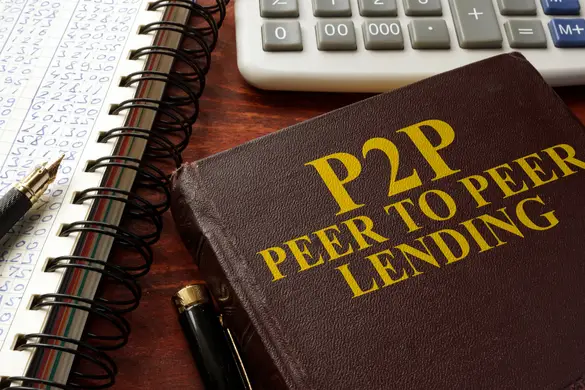
At some point, you may need funding for an emergency, business venture or vacation. You may want to consider applying for peer-to-peer lending opportunities.
What Is Peer-To-Peer Lending?
Peer-to-peer or P2P lending is a special lending opportunity for individuals and small businesses who would not normally qualify for loans from a traditional lender. P2P lenders are private investors, businesses, friends and loved ones who are willing to fund people’s loans. Borrowers go through a P2P marketplace to find interested investors instead of going to a traditional lender such as a traditional bank or credit union.
Many benefits come with P2P lending opportunities. For one, a borrower can get help from several people instead of one organization. That allows them to garner various small amounts rather than one highly deniable loan from a huge institution. Secondly, borrowers get to tell their stories and appeal to the emotions of prospective investors. Banks aren’t concerned with a personal story or aspiration. They base their decisions on a prospective borrower’s credit score. Unfortunately, that leaves many prospective borrowers with rejection letters.
How Does Peer-To-Peer Lending Work?
Peer to peer business lending and peer-to-peer personal lending work the same way. The first step is to find a reputable marketplace to request the loan. According to Lantern Credit, the most important step in getting a P2P loan is ensuring that the marketplace has a strong reputation and experience.
A new prospect will have to sign up for an account with the marketplace. Part of the registration process may involve proving one’s identity. Some marketplaces use mail service tactics to help applicants prove their identities. Other marketplaces may use other verification methods. Once the account is verified, the new user can proceed to try to get a peer-to-peer loan. The site may run a credit check to gauge the prospective borrower’s score before allowing that person to request an advance.
How Do You Get a Peer-To-Peer Loan?
Applying for a peer-to-peer loan starts with creating a profile and adding a story. A new prospect will need to let potential investors know about himself or herself and the business. That person will then need to explain the purpose of the loan and what he or she plans to achieve if given the funds. It’s a good idea for a prospective borrower to add a picture so that potential lenders can see who they’re lending money to. Some members don’t like to do that, but it can make the request seem more personal.
What Are the Chances of Gaining Approval?
There is no definitive approval percentage for P2P loans. However, applicants have a better chance of receiving help from an interested investor than receiving help from a large institution. Prospective borrowers can even campaign for contributions by sharing the links to the money requests on their business social media sites. Helpful individuals can support the person’s cause by signing up and getting involved. P2P lending has worked well for many people, and that’s why it’s still a leading source for business funding.
Those are the basics of peer-to-peer lending. You can apply for a loan today if it seems like an appealing concept to you.
What Are The Benefits Of P2P Lending?
Of course, there are numerous advantages of peer-to-peer lending. For a start, obtaining a P2P loan is fast, convenient, and often comes with lower rates. Similarly, getting an initial quote for this type of loan will not have an adverse effect on your current credit rating. Even more peer lent loans are unsecured, which often leads them to be more flexible than traditional bank loans. Surely, there are plenty of benefits of peer-to-peer loans and lending options. In fact, these are a primary type of loan to help you make necessary purchases.
Are There Risks Of Peer-To-Peer Loans?
Moreover, it is essential to understand the potential for risks and returns when investing in peer-to-peer loans. As with any individual or consumer loan, credit risk is a major factor to consider. The other primary risk that comes with P2P loans is in terms of liquidity. Typically, these loans are structured from three to five years. Therefore, it is important to be aware that your money will be tied up for a significant period. Certainly, it is important to understand the risks and returns associated with investing in P2P loans.
 Business First Family Business, Accounting, Finance, Investing, Marketing And Management
Business First Family Business, Accounting, Finance, Investing, Marketing And Management